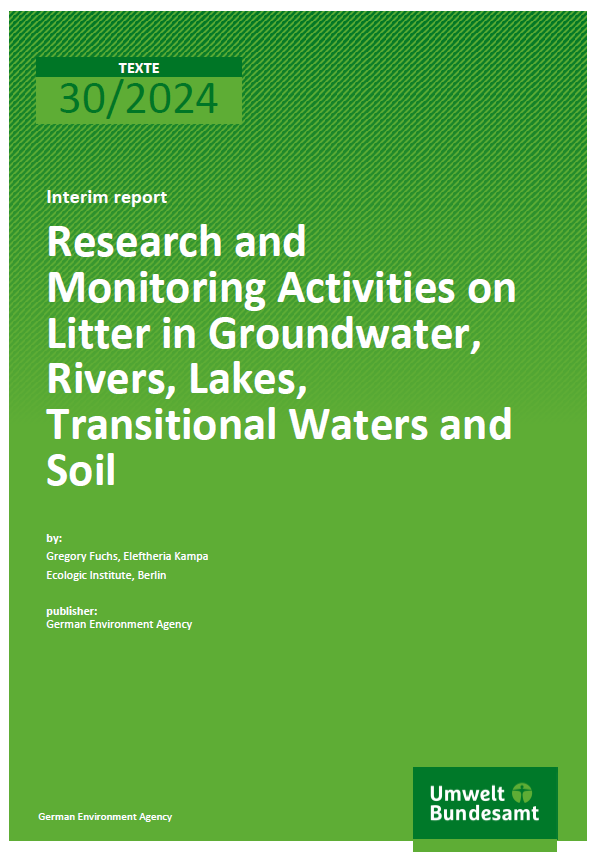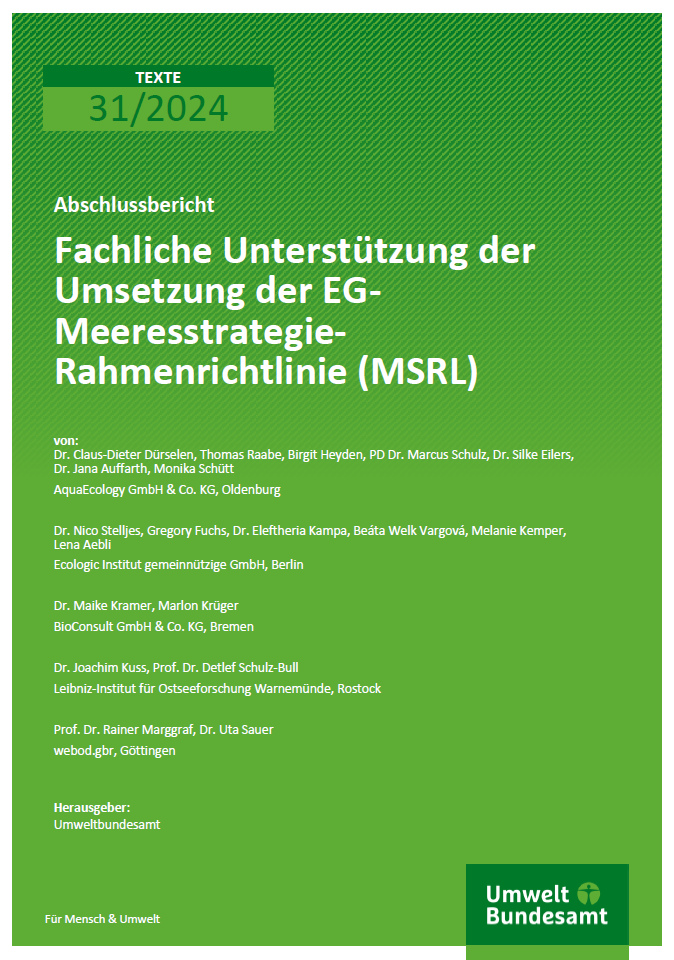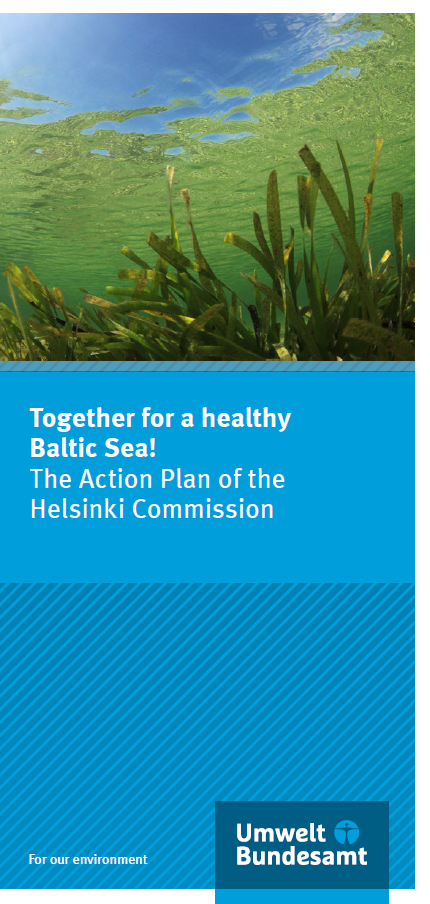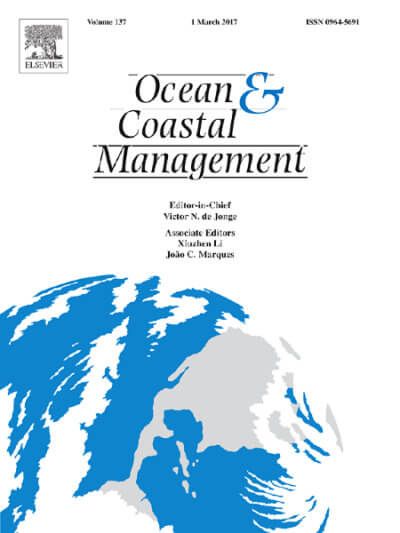Research and Monitoring Activities on Litter in Groundwater, Rivers, Lakes, Transitional Waters and Soil
Interim Report
- Publication
- Citation
Fuchs, Gregory and Eleftheria Kampa 2024: Research and Monitoring Activities on Litter in Groundwater, Rivers, Lakes, Transitional Waters and Soil. Interim report. German Environment Agency, Dessau-Roßlau.
The report "Research and Monitoring Activities on Litter in Groundwater, Rivers, Lakes, Transitional Waters, and Soil" discusses the outcomes of an ECOSTAT questionnaire distributed across European countries via the German Federal Environment Agency. ECOSTAT is an expert working group on ecological status in the Water Framework Directive Common Implementation Strategy. The report focuses on current and planned research and monitoring activities on litter in groundwater, rivers, lakes, transitional, waters and soils, as well as management activities in relation to litter and microlitter in surface waters. It emphasizes the urgent need for comprehensive, standardized monitoring, intensive research, and coordinated efforts to understand and mitigate the widespread impacts of litter pollution in various environmental compartments. Significant gaps in understanding the sources, transmission paths, and impacts of litter, particularly in groundwater and soil, persist, with few countries conducting research or monitoring programs in these areas. The findings underline the importance of an integrated European approach, financial support, long-term studies, and strengthening the research and policy framework in line with the EU's environmental goals.
Overview of Litter Pollution and Political Responses in Europe
In a comprehensive examination of the litter pollution issue, the report illustrates how increased global and European material consumption, especially of plastics, has led to an escalation in environmental pollution. The introduction highlights the significant impacts on terrestrial and aquatic ecosystems and outlines the European policy response, including the implementation of relevant directives and the role of the ECOSTAT working group, which supports information exchange and coordination among EU member states. The methodology includes collecting data through a questionnaire sent to European countries to gain insights into current and planned research and monitoring activities, as well as water management strategies regarding litter. This survey revealed broad engagement but also significant gaps in knowledge and action, particularly regarding groundwater and soil.
Research Gaps and Management Strategies for Waste Reduction
The analysis of waste sources and pathways elucidates the complexity of the issue and the need for targeted research, primarily concerning groundwater and soil, to close significant understanding gaps in these processes. Moreover, the report indicates that research activities outnumber monitoring and impact studies, suggesting a growing interest in the effects of litter pollution. Despite progress, significant gaps in comprehensive monitoring and understanding of environmental impacts/effects persist. The discussion on water management and waste reduction emphasizes the need for an integrated approach that includes preventative and reactive measures, supported by regulatory actions and involvement from NGOs and the industry in cleanup initiatives to effectively combat litter pollution.
Summary of Key Findings and Recommendations for Litter Pollution in European Water and Soil Environments
The "Key Findings and Recommendations" section of the report summarizes the main outcomes of research and monitoring activities on litter in water and soil environments in Europe. It highlights successful practices, such as national and transnational river monitoring programs that offer a more comprehensive approach to macro-litter monitoring. Examples include the Joint Danube Survey and the planned Dutch river monitoring program, based on a national monitoring strategy. It is noted that many European countries are taking or planning actions to reduce waste input and remove existing litter from surface waters, with national strategies, action plans, or roadmaps, especially regarding (micro-)plastics.
However, significant gaps, challenges, and needs for further actions in research and monitoring are also identified. A large portion of the sources and pathways of litter into aquatic environments and soil remain unknown, especially for groundwater, where the need for information is greatest. Research studies on litter focus more on freshwater environments than on transitional waters, and there is a lack of monitoring and effect studies, indicating that the issue of litter is still in the pilot phase in many countries. The report underlines the need for widespread, standardized monitoring, including uniform analysis methods and intensive research, to determine the extent and causes of litter pollution – both fundamental prerequisites for formulating effective policies.







